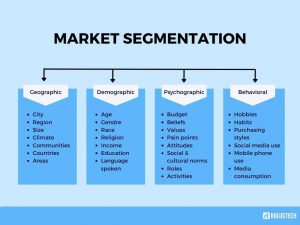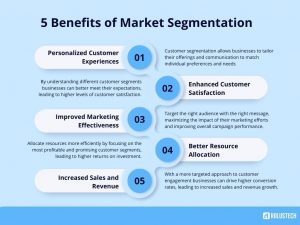Picture this scenario: you are a skilled tailor creating a collection of bespoke outfits for a diverse group of clients. Each person has unique body shapes, style preferences, and occasions they want to dress for. To ensure that each client receives the perfect ensemble, you carefully segment them into distinct groups based on their measurements, style preferences, and event requirements.
By tailoring each outfit to suit the individual’s specific needs and tastes, you deliver a personalized experience that makes them feel confident and special. In the same way, market segmentation in business involves dividing your customer base into well-defined groups based on factors such as demographics, behavior, and interests. This enables you to craft tailored marketing messages, product offerings, and customer experiences that resonate with each segment.



The Power of Customer Segmentation and its Benefits
Customer segmentation is a strategic process of dividing a company’s customer base into distinct groups or segments based on certain shared characteristics, behaviors, or needs. The purpose of customer segmentation is to gain a deeper understanding of different customer groups and to tailor marketing, products, and services to meet their specific preferences and requirements. Incorporating advanced techniques, customer segmentation models form the basis of strategic marketing approaches. Businesses refine their customer segmentation model, utilizing the capabilities of Salesforce’s customer data platform. In order to establish an effective strategy and select the appropriate data model, it is crucial to comprehend which types of customer data would most significantly influence conversions. Addressing the following questions will aid in identifying the relevant data:1) What specific outcomes do you aim to achieve through customer segmentation?
The primary goal of implementing Salesforce segmentation, utilizing the Salesforce customer data platform is to refine your strategy with a clear objective in mind. Whether it’s to boost sales, enhance customer loyalty, or introduce a new product, having a well-defined goal is essential.2) Which segment holds the greatest potential to align with your objective?
When targeting a particular product or service for sale, it’s imperative to identify the demographic most inclined to make a purchase. While smaller segments may exhibit potential, their profitability hinges on factors such as purchase margins and frequency.3) Which specific qualities are prevalent in this extensive customer segment?
For a more precise Salesforce segmentation, gaining insights into the overall attributes of your target audience is important. Usually, businesses begin with segments that prove too extensive to personalize the messaging effectively. By creating a comprehensive portrait of your customers, you can identify opportunities to create smaller, more tailored segments that align with their specific needs.4) What model of segmentation is most suitable for achieving your objectives?
Evaluate the attributes of your target audience to determine the most effective segmentation model aligned with your objective. For example you are launching a new line of luxury skincare products. In this case, a demographic segmentation model that targets high-income individuals interested in premium skincare routines might be more effective than a behavioral model that simply focuses on skincare enthusiasts.5) Are you equipped with the necessary tools to assess your segmentation strategy effectively?
Having the right tools to evaluate your segmentation strategy is crucial. They provide data-driven insights, measure effectiveness, identify opportunities, and ensure adaptability to changing customer behavior. With these tools, you can maximize ROI, allocate resources wisely, and create personalized marketing efforts for better customer experiences, ultimately leading to business growth and success.




